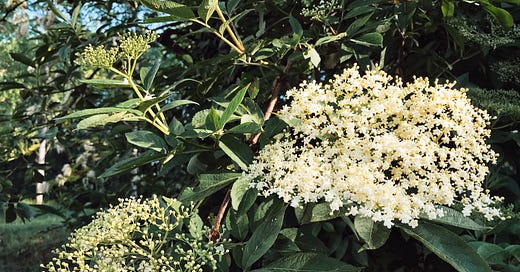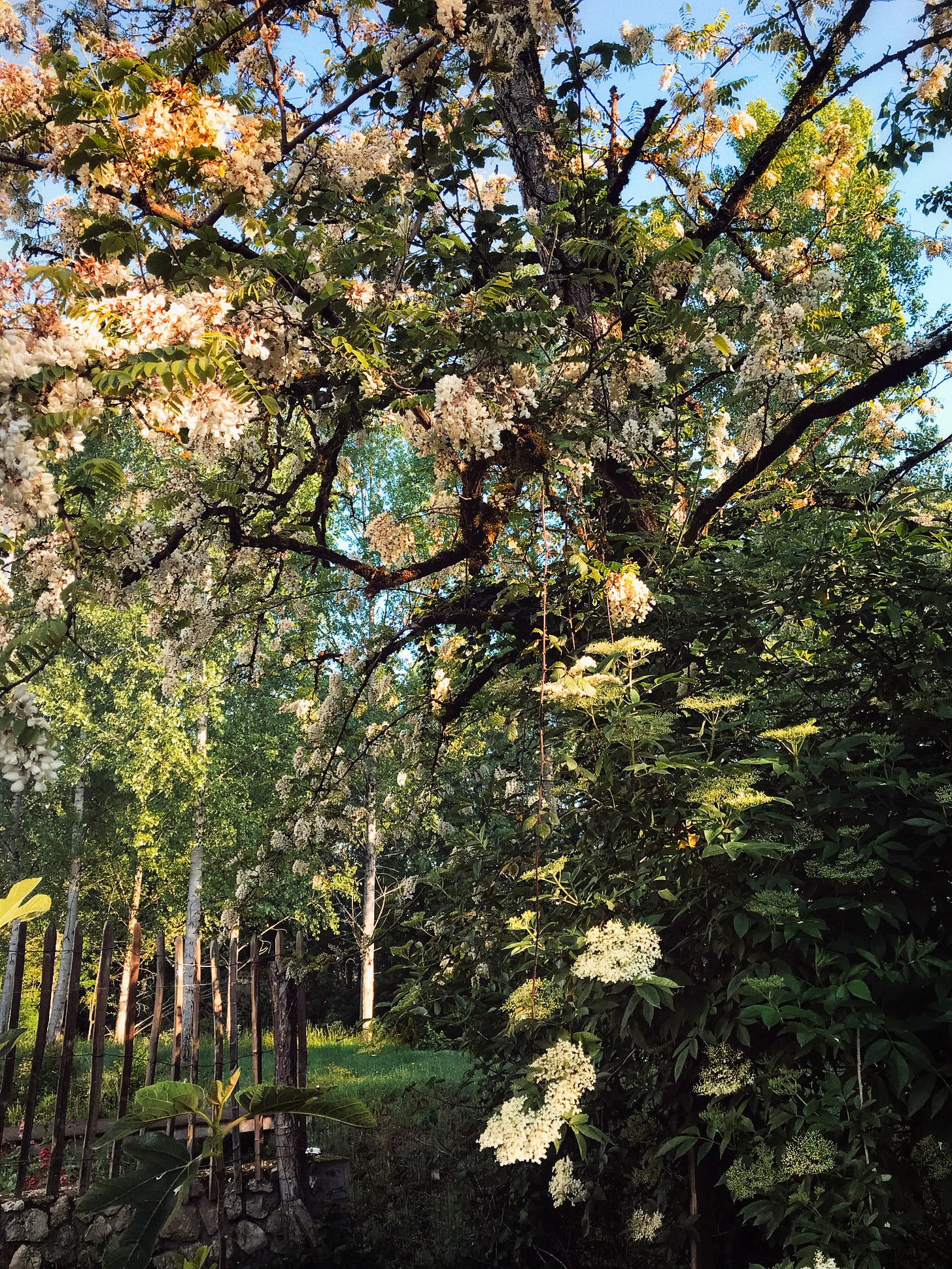April Showers where did you go?
At the very end of the driest April on record- my record of 30 plus years at Camont, it rains. At last. I have been watering the newly planted seeds- mesclun, cornichons, and an assortment of Asian greens; a few holdovers from last year- fennel and calendulas whose roots are deep enough to survive if not thrive; newly planted beets, Napa cabbage, parsley, padron peppers, and artichokes have hung on; and the patches of perennials return to fill in the corners of the square raised beds with chives, leeks, lemon verbena, lovage, mint, thyme, oregano, lemon balm, rosemary, raspberries. Day after day of this unseasonably dry April has stunted my kitchen garden (le potager) under persistently blue skies as I try to weed and break up the dense clay clods which have baked as hard as terra cotta pots. Years of ‘amending the soil’ has little effect as the compost seems to disappear under the gravel-pocked soil.
Camont sits in the old river bed of the Garonne and has deep layers of gravel that would be perfect for a quarry. In fact, there are two working gravel pits nearby. Somehow those smooth river polished stones wiggle their way up through the layers of silt and clay to return to bask in the sun and dry out the beds. It’s an ongoing battle but one that I chip away at, a few hours at a time, moving stones to the corners of the beds, adding compost and top dressing, and then mulching like crazy once the little plants have appeared. As an ex-husband would say--with a handful of euros, I could buy all the vegetables that I produce. But that’s not the goal of this garden game.
I planned the first giant potager square (60 feet by 60 feet) 30 years ago in a sunny field out past the oak and acacia park. The soil was the same--rich but stony, and I attacked it with a stronger body and summers of visiting helpers creating a tic-tac-toe of 9 large squares which I filled with huge beds of haricots verts (green beans) and coeur de boeuf tomates (so many tomatoes!), French pumpkins, and rows of cassoulet beans for winter food. I canned and preserved and filled a pantry housed in the stone piggery next to the pigeonnier. The work was epic but rewarding as I bequeathed baskets of produce to newly arriving expats as an incentive to plant their own gardens (or pitch in to help me with mine). I remember that famous Summer of Tomatoes- 2003, when in the aftermath of the Iraq War in the Spring, all my cooking students and guests cancelled for fear of reprisal by the French (in retaliation for Freedom Fries and French wine being poured into the street?) While the politicians and armies rained chaos, death, and fear on a region, I grew tomatoes. Sue and Talley, a pastry chef and young student, planted and weeded as we harvested wheelbarrows full of perfect tomatoes throughout the summer.
In the late 2000’s as the Great Recession crippled world economies, I barely noticed as I planted beds of pumpkins that sent vigorous tendrils sprawling across the grassy paths. I saw that my grand plans for large harvests and shared bounty could be undermined at any moment by a wayward terror attack, a bomb in someone’s underwear, or even a misplaced decimal point that could send it all crashing to the ground. While my intentions were still good, my scale was way off. I needed to shift my focus to a handful of beds that could flourish or lie dormant as needed. When Jill (another talented work helper) suggested I move the potager closer to the house, I jumped on it and the current raised bed potager was born, little by little. Flexibility in my business, rooted in international travel, was also imperative and I broadened my own work to teach farmers and chefs by creating a professional butchery and charcuterie course. The garden, having moved to the kitchen area now benefited from what I call ‘Kitchen Window Fertilizer’- whatever you see from your kitchen window flourishes. Even as I write this now, I look out on the four herbier beds, as a pomegranate and rose apple tree anchor the squares in front of a backdrop of espaliered pear and cherry trees. On sunny mornings Chica and I inspect for slug damage or a weed takeover with coffee in hand. These are the happiest plants at Camont.
I look back at these events that have shaped my garden, and my life, here at Camont with some experienced time traveller’s rules: be mindful of the past, stand still and observe, be flexible, and most of all tread carefully into the future with that seasonal knowledge that comes around yearly. This year while the nesting songbirds are in full force, we rescue a fledgling not ready to fly from its second story nest in a window niche of the kitchen. But it’s little wings weren’t fully ready for flight and it lay within the cat’s domaine on the ground under the hydrangeas. By the time we found the nest’s location and returned it, the parent wrens must have given up and abandoned it. Now we were complicit in its future- cat food or starvation? That famous butterfly effect even in the garden has its impending trauma.
Like time travel, today’s potager garden can be a warped reflection of the past. Decades of planting trial and error, a casual and fluid approach to landscaping, a dedicated program to weed and tidy only serves to keep me between the lines. I step on that butterfly every time I decide to plant another tree, gravel over another path, and divert the shade of a bramble bush from the ditch. I know that in another few decades, this could all be gone in the swoosh of a tractor and an immaculate dandelion free lawn planted.
Before that happens, I will spend another season harvesting lovage leaves for soups, lemony verveine for iced tisanes, tiny fraise des bois to sprinkle across a lemon tart or just pop in my mouth. Roquette gone wild is flowering now; acacia trees and elderflowers are scenting the garden as the morning sun warms the chilly air; all the roses are ready to pop. Grateful for the May first rains, I turn my attention to cooking from these first spring harvest. Here’s a simple Sirop des Fleurs Blancs to make now with the first scented flowers- jasmine, acacia, elderflower, and roses. I’ll use this through the summer for fizzy soft drinks, making garden cocktails with Dame Blanche (white armagnac). It’s time to take a walk around your neighborhood gardens and see what is blooming!
Recipe: Sirop de Fleurs Blancs
Harvest a small basket full of white flowers- acacia blossoms, elderflower, jasmine, roses.
Cook equal portions of white sugar to water for a simple syrup (1:1)
1 lemon per liter of water, zest and juice
Cook the sugar and water until the sugar crystals have dissolved.
While cooling slightly, pack the flowers (minus any woody stems) and lemon zest and juice into clean glass jars.
Pour the warm simple syrup over the flowers, cover, and let steep until cool. Leave for 24 hours.
Strain the flowers and lemon zest from the syrup, return the clear syrup to the jars or other bottles, seal and store. For the longest shelf life process the jars by boiling, or keep in a refrigerator.
Use for sparkling water sodas, garden cocktails, cake glazes, or to flavor shave ice. Use all summer to make iced tisanes and other long drinks.
For more seasonal recipes and online classes, sign up here.






No matter what else is going on in my life or the world, gardening remains the same. There is always the time to plant, grown, and harvest. It is a cycle that keeps me grounded. Also, Paul always tells me that I grown the most expensive tomatoes in the world! But it's not about the time and money I spend, it's what I gain. 🐞